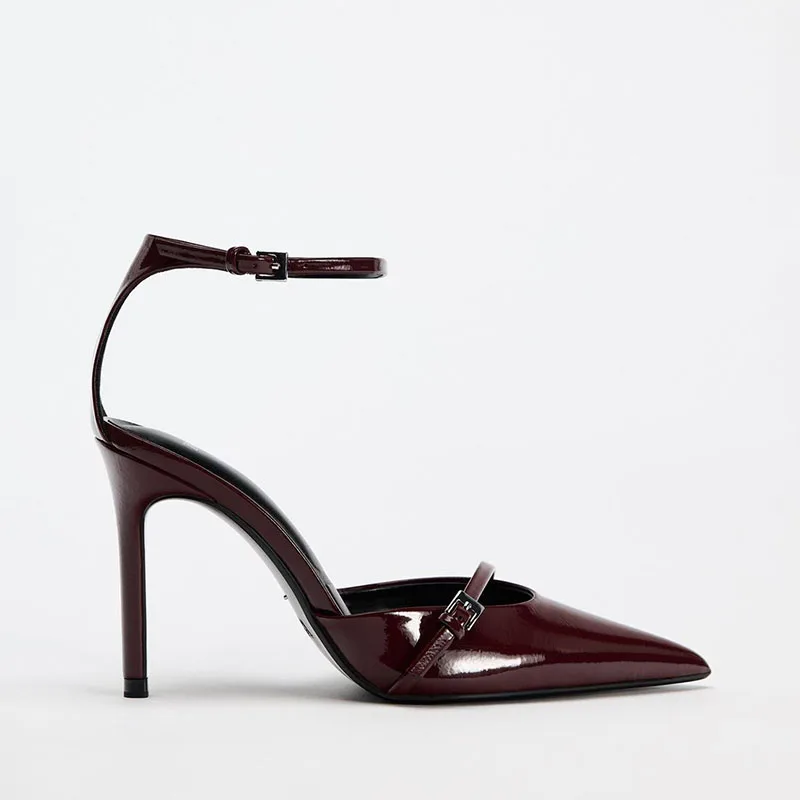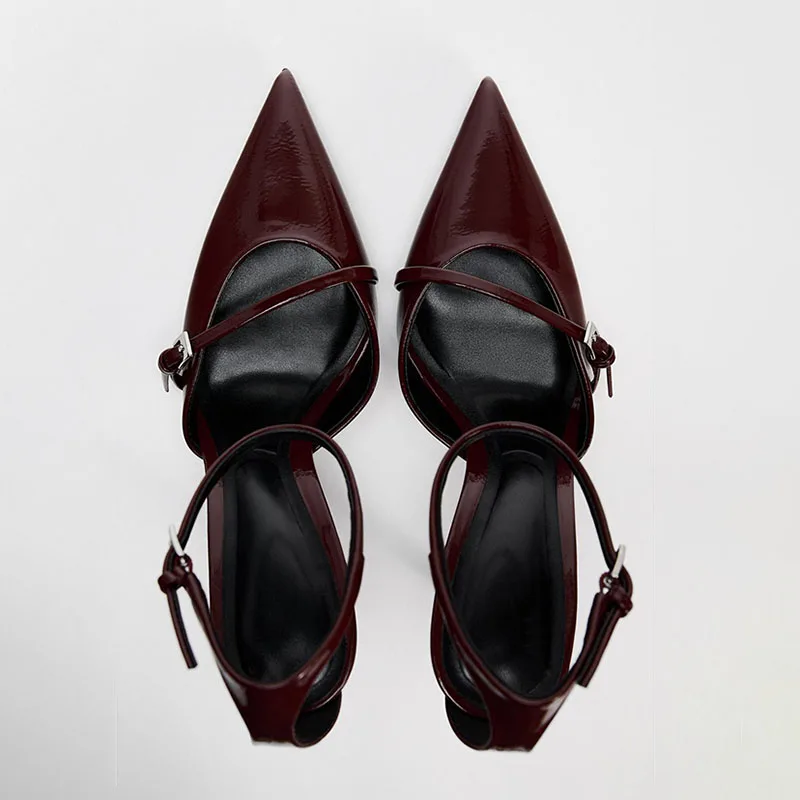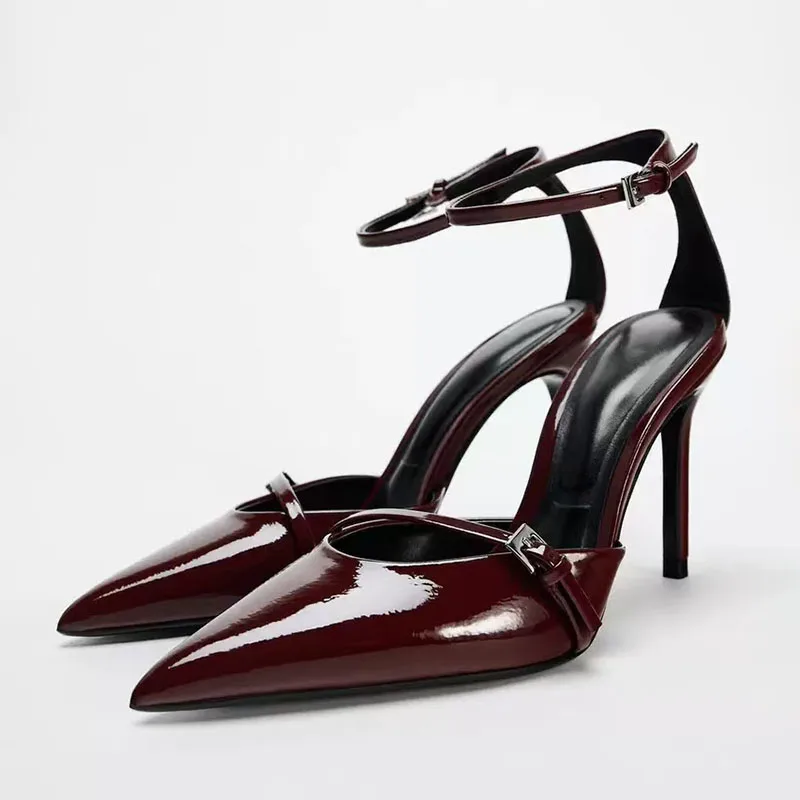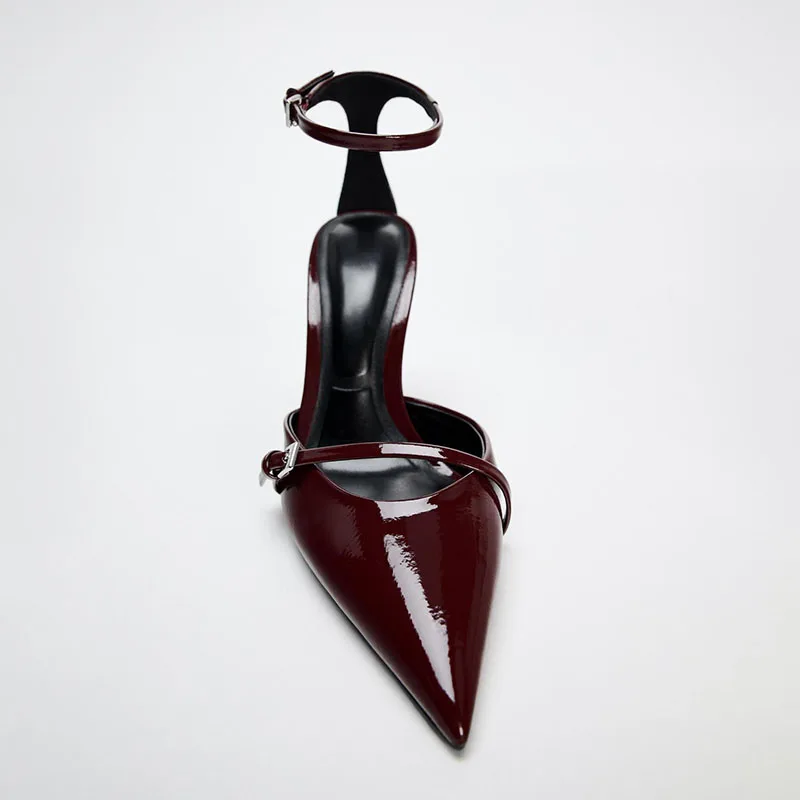The Importance of Appropriate Heel Height
Choosing the right heel height is crucial for both comfort and health. How high are high heels? Heels that are too high can cause a range of problems, not just foot pain but also issues affecting the knees, back, and even posture. Conversely, flats that lack sufficient arch support can lead to pain and discomfort as well. Therefore, it’s essential to find a heel height that provides a balance, offering style without sacrificing comfort or health.

Heels with an elevation of about 1 inch are often recommended by health professionals like Dr. Miguel Cunha, a podiatrist. He suggests this height because it puts less strain on the Achilles tendon and supports the arch of the foot. This can prevent issues such as heel pain, shin splints, and back pain. Moreover, appropriate heel height helps in maintaining a balanced posture and a natural walking stride.
Wearing heels changes your center of gravity and can lead to various foot disorders if the height is excessive. Problems like ingrown toenails, bunion deformities, hammertoes, and even tendonitis can arise from prolonged wearing of high heels. These conditions illustrate the importance of not just looking at the aesthetic appeal of heels but also considering their impact on foot health.
Women often feel more confident and stylish in heels, but the wrong heel height can be a visible discomfort. Observing a woman’s walk can reveal if her heels are too high – an unsteady stride or a body that isn’t aligned well indicates potential issues. Therefore, selecting heels with a suitable height is vital for both health and confidence.
In summary, the key to finding the ideal heel height lies in balancing fashion desires with the body’s needs. It’s about protecting one’s health while still enjoying the boost that a pair of heels can provide. Later in this blog, we’ll explore how to determine your perfect heel height and factors to consider beyond the height of the heel.
The Health Impact of High Heels vs. Flats
When contrasting high heels and flats, the primary concern revolves around health implications. High heels, typically considered above 2 inches, shift body weight onto the balls of the feet. This unnatural distribution can strain the Achilles tendon, lead to metatarsalgia, and exacerbate bunions and hammertoes. Consequently, the toes bear excessive pressure, fostering ingrown toenails and potentially tendonitis due to constant tension on the tendon.
Flats, often viewed as the safer choice, also have downsides if they lack arch support. They can cause foot pain, contribute to pronation, and result in arch collapse. Poorly designed flats can lead to heel pain, shin splints, knee discomfort, and back problems. A flat shoe fails to lessen the tension on the Achilles tendon, contrary to a slight heel.
However, the key lies in a middle ground – a heel height that offers both comfort and support. A 1-inch heel height can combine the best of both worlds. It provides slight elevation to reduce Achilles tension and supports the foot’s arch to fend off pain. It stands as a better option than completely flat shoes, which disregard arch support.
So, it’s clear that extremes on either end – too high or completely flat – can invite a host of health issues. Finding that ideal heel height is a critical step towards maintaining healthy feet, legs, and back. Subsequent sections of this blog will delve into determining the perfect heel height, considering additional factors when choosing heels, and understanding the long-term effects of wearing high heels on foot disorders.
Optimal Heel Height for Comfort and Support
For comfort and support, strike a balance with heel height. The sweet spot? About 1-inch high. This size lifts the heel slightly, easing tension on the Achilles tendon. It also supports the foot arch, which is key for comfort. This height avoids the problems of both flats and high heels.
Why One Inch Is Just Right
A 1-inch heel aids in proper alignment of your posture. It reduces strain on your tendons and muscles. Moreover, this height avoids overloading the ball of the foot. Thus, it prevents the foot pain often linked with higher heels.
The Science Behind the Ideal Heel Height
Research suggests that a modest heel can improve foot alignment. It can also lower the risk of injuries related to posture and strain. Shoes with very low heels or flats can lack sufficient arch support. This can lead to foot and lower body pain.

The Role of Arch Support in Heel Comfort
Arch support is essential in preventing foot disorders. A good arch support helps in distributing your weight evenly. This is crucial in preventing overpronation and strain on your feet.
In conclusion, an optimal heel height blends style with health. It’s a balance point. It offers enough height to be stylish without hurting your feet. When heel shopping, aim for the golden mean. Look for a 1-inch heel that has solid arch support. This will help you stay comfortable and supported all day long.
The Link Between Heel Height and Foot Pain
Foot pain is often linked to the height of heels you wear. High heels, particularly those exceeding 2 inches, can cause your body weight to shift onto the balls of your feet. This can create pressure and result in pain in various areas, not just the feet. For instance, a high heel may lead to conditions like metatarsalgia, a type of forefoot pain. It can also worsen bunions and hammertoes, which are deformities causing pain and discomfort.
High heels can also cause a shortening and tightening of the Achilles tendon. If you frequently wear high heels, this can make wearing flats uncomfortable. The tendon may become so accustomed to the position enforced by high heels that it can’t stretch without pain. Over time, this can result in consistent discomfort and may lead to tendonitis.
On the other hand, flats can also be problematic due to lack of support. Without proper arch support, flats can lead to a collapse of the arch, contributing to pronation and related pains such as shin splints and knee pain. A completely flat shoe may not provide the necessary relief for the Achilles tendon, which can also result in heel pain.
Therefore, it’s not just super high heels that can cause issues, but the wrong type of flat shoes can also contribute to foot pain. The ideal heel height minimizes these issues by offering enough lift to reduce tendon strain and providing enough support to maintain proper foot alignment. Remember, finding a heel that’s approximately 1-inch high can offer a good balance between style and comfort, reducing the risk of foot pain.
How to Determine Your Perfect Heel Height
Finding your perfect heel height is essential for comfort and style. The key is to match heel height to your foot’s anatomy and your tolerance. Here’s a step-by-step guide to help you determine the ideal heel height for you.
- Understand Your Foot Shape: Your foot shape, including arch type and width, influences the best heel height for you. People with higher arches often handle higher heels better.
- Consider the Flexibility of Your Talus: The Talus bone affects your capability to wear higher heels. If your Talus allows for more movement, you may tolerate higher heels.
- Test Your Comfort Level: Try on different heel heights. Pay attention to how your foot feels. A slight elevation might be well-received, while higher heels may cause discomfort.
- Assess Heel Incline: Observe the heel-to-toe drop. The steeper it is, the more pressure on the front of your foot. Look for a comfortable incline.
- Measure Your Foot: Use a Brannock device to get an accurate measure of your foot size. This can inform the heel height that fits your foot size appropriately.
- Watch Your Walk: Walk around in the heels. Your stride should feel natural and balanced, not strained or uncomfortable.
- Seek Professional Advice: Consider seeing a podiatrist for personalized advice. They can provide specific recommendations based on your foot health.
- Beware of Long-Term Effects: Reflect on the long-term health of your feet. Constantly wearing too high heels can lead to permanent changes and pain.
By understanding these factors and being aware of how high heels affect your feet, you can make informed choices. Aim to find heels that elevate your style without compromising your comfort and health. Stay stylish and sensible with the perfect heel height for you.

Factors to Consider Besides Heel Height When Choosing Heels
While heel height is a key factor, it’s not the only one you should consider. Style and support also weigh in when you’re choosing heels. Pay special attention to these additional aspects:
- Toe Box Size: Ensure there’s enough room for your toes. A tight fit leads to discomfort and toe problems.
- Arch Support: A well-designed arch prevents overpronation. This can save you from a lot of pain.
- Heel Width: A wider heel offers more stability. It can make walking easier and safer.
- Material Flexibility: Softer materials can mold to your foot. This offers more comfort throughout the day.
- Strap Placement: Straps should secure the shoe without pinching. They help prevent your foot from sliding forward.
- Cushioning: Insoles with cushioning absorb impact. They provide added comfort on hard surfaces.
- Shoe Incline: The slope from heel to toe affects foot pressure. A gentle incline can mean less pain.
- Overall Fit: The perfect heel fits well in length and width. A poor fit can cause blisters and chafing.
These points, along with heel height, ensure that your high heels are both chic and comfortable. Remember to try on shoes and walk in them before buying. This helps you assess if they truly meet your needs. By considering these factors, you’ll not just look good, but also feel great.
Recommendations for Maximum Heel Height
When picking out high heels, it’s crucial to know how high is too high.
Never Exceed 3 Inches
Experts like podiatrists suggest you should never go beyond 3 inches. Why? Because anything higher can alter how you walk. This leads to extra pressure on the balls of your feet. And it puts more stress on your knees and lower back. A heel height over 3 inches is not worth the potential pain and problems.
Why Moderation is Key
A moderate heel height, about 1 to 2 inches, is the safest choice. It gives you a stylish lift without compromising your foot health. A good rule is to stay within this range to prevent discomfort and injury.
The Consequences of Too-High Heels
Heels beyond the recommended height can cause foot issues. Think bunions, hammertoes, and metatarsalgia. Not to forget, it can shorten your Achilles tendon over time. This makes wearing flat shoes painful later on.
In conclusion, stick to heels that are no higher than 3 inches. This will help you stay stylish while taking care of your feet. Remember, comfort and support should always come before height.
The Relationship Between Long-Term High Heel Use and Foot Disorders
Wearing high heels for a long time can harm your feet. Such shoes often lead to foot disorders. It’s not just about short-term pain or discomfort. The risks include lasting changes to foot structure and function.
Long-Term Effects of High Heels on Foot Health
Years of high heel use can cause serious foot problems. These include bunions, hammertoes, and ingrown toenails. The toes get squeezed, and the tendons can shorten. This leads to pain and problems.
High heels can also damage toenails. Wearing them too often may cause nails to grow into the skin. This can result in painful ingrown nails.
Bunions get worse when high heels force the big toe toward the other toes. Over time, this can cause a lot of pain and even change how you walk.
Hammertoes are another issue. They happen when toes bend under pressure from high heels. After a while, the toes can’t straighten out on their own. This is painful and can make wearing any shoes hard.
Tendinitis from High Heels
Heels put extra pressure on the Achilles tendon. It’s the band of tissue that connects calf muscles to the heel bone. When the tendon stays tight, it can lead to tendinitis. That means inflammation and pain, often very bad.
Wearing heels a lot can make the tendon tighter. This is bad even when you switch to flats. The tight tendon has to stretch, and this is painful.
Arthritis and High Heels
Arthritis in toe joints is another risk from long-term high heel wear. Heels shift your balance. They put more weight on toe joints. Over time, this can wear out the cartilage and cause arthritis. It means the joints can get swollen and hurt a lot.
So, how high are high heels that cause these problems? It’s the ones over 3 inches that change your walk. The impact on the feet is heavy, leading to various foot disorders.
It is smart to think about these effects when picking shoes. Shoes should look good but also keep your feet safe and comfortable. High heels might be stylish, but they shouldn’t lead to foot disorders. Long-term health is important for happy and functional feet. Remember to keep heels under 3 inches for the best care of your feet.
